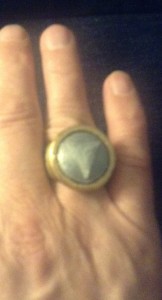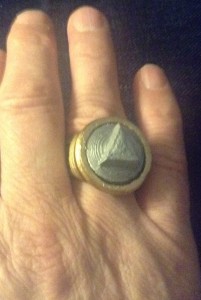I blogged recently about the Ring of Gyges, the invisibility ring mentioned by Plato in The Republic, a ring I wrote about in my upcoming story,  “Ripper’s Ring.” Today I revisit the topic since I now own the ring.
“Ripper’s Ring.” Today I revisit the topic since I now own the ring.
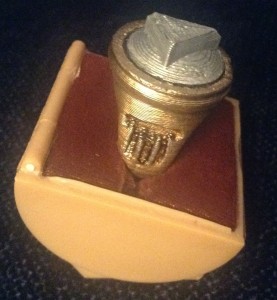
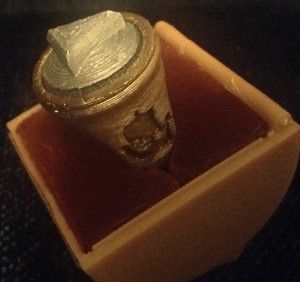 Well, the one I own is actually a replica, or at least a conception of how the ring might look. A close acquaintance of mine made it by the technique of additive manufacturing or 3D printing.
Well, the one I own is actually a replica, or at least a conception of how the ring might look. A close acquaintance of mine made it by the technique of additive manufacturing or 3D printing.
As shown on Thingiverse, my ring was based on two versions of the Green Lantern’s ring shown here and 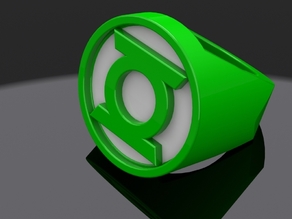
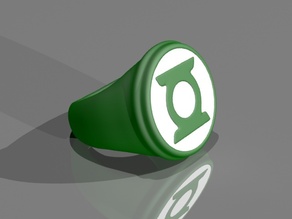 here. Then my friend used Tinkercad and 123D to add the Gyges touches. She used a Printrbot brand printer, the Simple (Maker Edition) and PLA filament. The .stl files you need to print the ring yourself are on the Thingiverse site. She glued a machine screw and nut to fasten the pieces together and allow rotation. If you make the ring yourself, you’ll need to scale the design so it prints a ring that will fit you.
here. Then my friend used Tinkercad and 123D to add the Gyges touches. She used a Printrbot brand printer, the Simple (Maker Edition) and PLA filament. The .stl files you need to print the ring yourself are on the Thingiverse site. She glued a machine screw and nut to fasten the pieces together and allow rotation. If you make the ring yourself, you’ll need to scale the design so it prints a ring that will fit you.
As Plato described the ring, the collet (the part of the ring that grips the stone) could rotate. The stone must have had some sort of obvious orientation, because when Gyges turned it toward himself, he disappeared; when he turned the stone 180° toward his fingertips, he reappeared.
In my story and in my 3D printed ring, the stone is in the shape of an isosceles triangle, so think of the stone as an arrow—pointed toward you makes you invisible.
Not quite like that. It actually looks like this:
And when you rotate the stone to point the other way, you become visible again.
In “Ripper’s Ring,” (which launches in less than a week on May 4th!), I describe how the ring was made and how it works. A farmer finds a meteorite, and parts of it are solid to the touch, yet invisible. Anyone who touches the invisible metal becomes invisible, too. A jeweler discovers that the invisible metal becomes visible (and returns its wearer’s visibility) when in contact with iron.
The jeweler constructs a ring of gold lined inside with the invisible metal touching the finger. The stone is a triangle of iron attached with a screw mechanism such that the wearer can rotate the triangle and move it up or down. Moving it down brings it in contact with the invisible metal, rendering the wearer visible again.
So far I haven’t gotten my Ring of Gyges to turn me invisible, though I will keep trying. Perhaps when you make yours, it will work. For your sake, I hope not. Don’t forget to get your copy of “Ripper’s Ring” and wear your own Ring of Gyges while reading it. If you make one, or have any questions, or if you think I should 3D print more objects from my other stories, leave a comment for—
Poseidon’s Scribe

